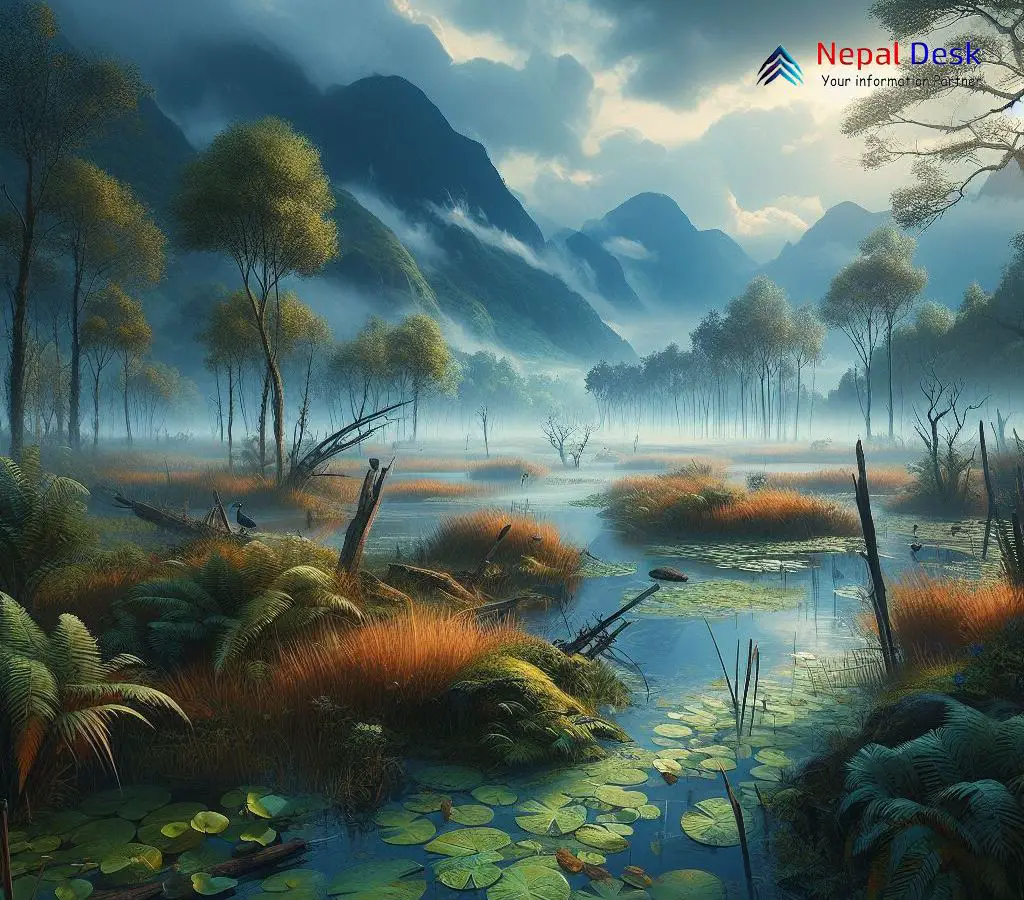Terhakune Wetlands in Illam: Getting Popular with Tourists
Published Date

Published Date
The rising popularity of Terhakune Wetlands in Illam; the efforts of the Wetland Protection Committee, and its significance for Nepal's biodiversity.
⏱ 3 min read
At the junction of wards number one and three within the Mai Municipality of Illam District, the Terhakune Wetlands are quickly becoming a hot spot for local travelers.
Karsingh Rai, Chairperson of the Wetland Protection Committee, has observed a surge in visitors from nearby districts such as Ilam, Jhapa, and Morang, amongst others. This increase is attributed to recent enhancements in the area's infrastructure. The committee has facilitated recreational boating by providing two vessels on the tranquil Terhakune pond, adding to the allure for tourists.
A local community member noted that the wetlands attract a substantial influx of national tourists daily, drawn to its pond and picturesque environment. He added, "On Saturdays and public holidays, there's a notable upsurge in visitors arriving for leisure activities like picnicking."
Improved road networks now make access to the Terhakune Wetlands more convenient; this nature haven sits 34 kilometers south of the Ilam district capital. Encompassing a vast 300 ropanis with a pond spanning about 100 ropanis, the wetlands are enveloped by lush vegetation, sloping hillsides, and dense woodland that enhance its visual appeal.
Wetlands in Nepal
Nepal prides itself on its rich tapestry of ecosystems; its 242 wetlands -- representing nearly 5% of the country's total landmass -- are significant biodiversity hotspots. As per reports, close to 20% of the population is dependent on wetlands for their livelihood. The importance of wetlands and their threats has been recognized in Nepal and different legislations have been formulated like National Wetland Policy 2003, Ramsar Convention 1997, National Wetland Policy 2069 among others.
National Wetlands Policy of Nepal (HMGN/MFSC 2003) has defined wetlands as: “Perennial water bodies that originate from underground sources of water or rains. It means swampy areas with flowing or stagnant fresh or salt water that are natural or manmade, or permanent or temporary. Wetlands also mean marshy lands, riverine floodplains, lakes, ponds, water storage areas, and agricultural lands.” These ecosystems provide vital habitats for diverse plant and animal species making them prime spots for eco-tours such as wildlife safaris and bird-watching adventures. Ranging from still waters to alpine lakes, Nepal's wetlands captivate with their varied scenery. Committed to their preservation, Nepal became an adherent to the Ramsar Convention in 1988.
In its pledge to safeguard these pivotal environments, Nepal boasts ten Ramsar sites accredited as Wetlands of International Importance covering an expanse of 60,561 hectares. The prominent sites include:
- Phoksundo Wetland
- Koshi Tappu Wildlife Reserve
- Jagadishpur Reservoir
- Gosaikunda Wetland
- Gokyo Wetland
- Ghodaghodi Lake Area
- Beeshazaar and associated Lakes
- Maipokhari
- Rara Lake
- Pokhara Lake Cluster
Wetlands are considered to be one of the most threatened of all major natural ecosystems and are claimed to deserve a high priority for conservation and sustainable use. Wetlands of Nepal range from the torpid ponds of the subtropical Terai to the glacial lakes of the High Himalayas which indicates the diverse wildlife species supported by them. The wetlands of Nepal constitute an important ecosystem that harbors a large number of endemic wildlife species, many of which are on the brink of extinction. As such it is our prime responsibility towards its conservation.
